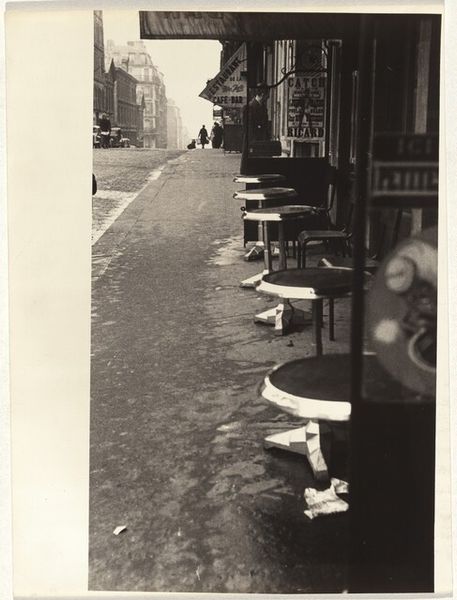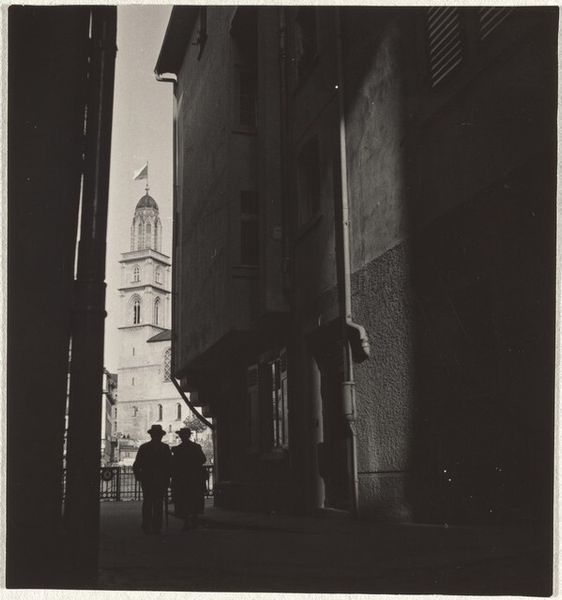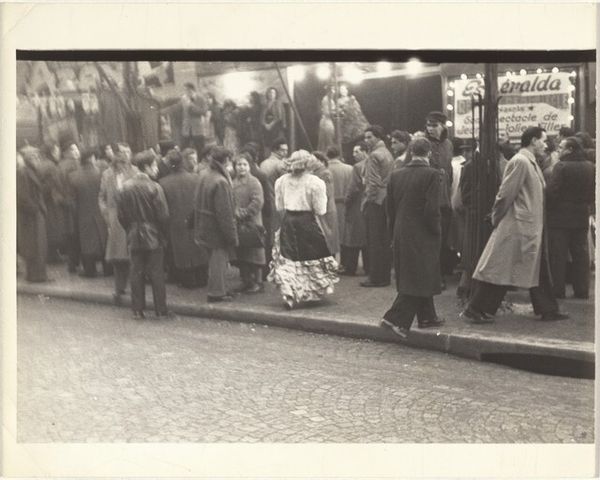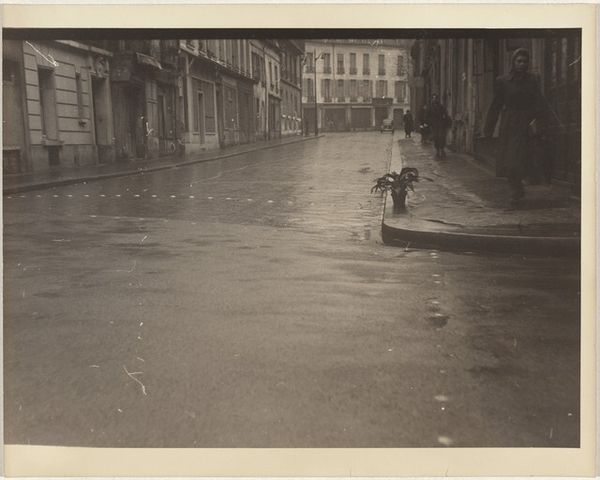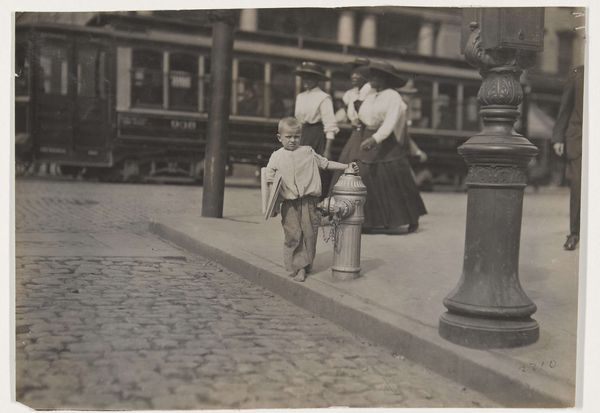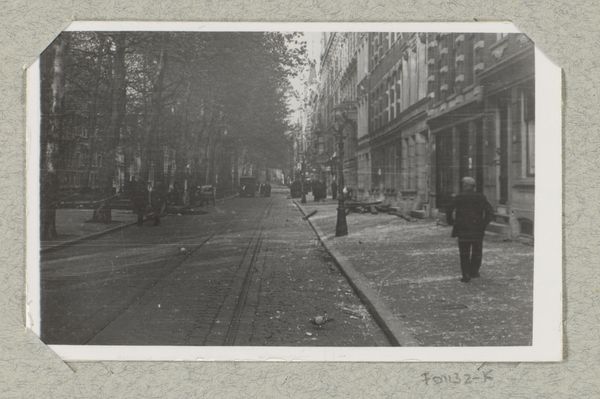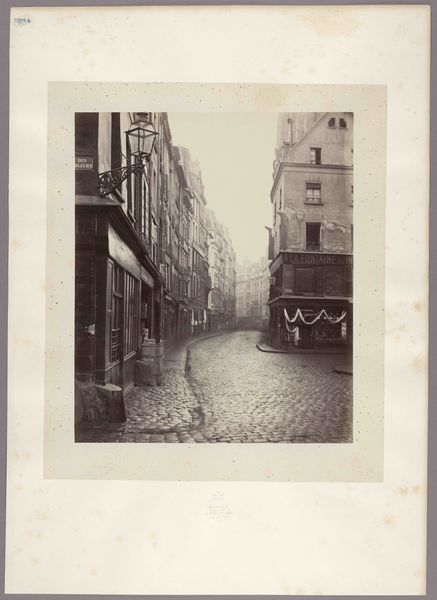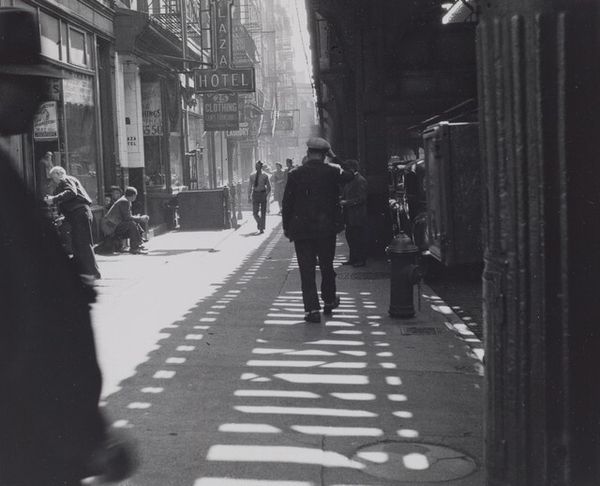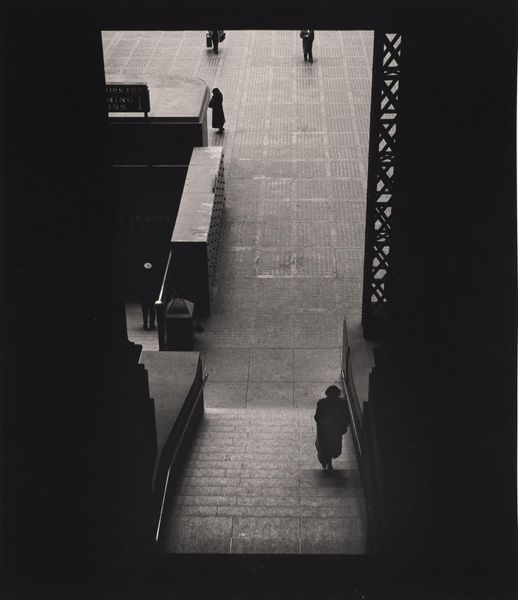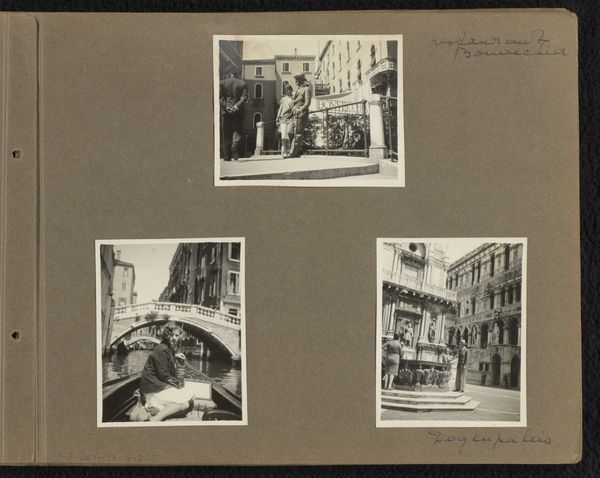
print, photography, gelatin-silver-print
#
print photography
# print
#
street-photography
#
photography
#
historical photography
#
gelatin-silver-print
#
cityscape
#
modernism
#
realism
Dimensions: sheet: 20.2 x 25.3 cm (7 15/16 x 9 15/16 in.)
Copyright: National Gallery of Art: CC0 1.0
Curator: What a fascinating photograph, Editor. This gelatin-silver print is titled "Car lined street, Paris" and was taken by Robert Frank in 1951. What's your initial take? Editor: Somber. Definitely somber. The cobblestone street seems slick with rain, and everything's draped in this almost monochromatic palette, lending it a weighty, melancholic atmosphere. It is cinematic; however, this effect doesn’t seem romantic at all. Curator: Absolutely, I find that heaviness interesting. Frank's early work, before "The Americans," already hinted at his knack for capturing the everyday with a certain... grit. The composition itself draws your eye along that receding line of cars, almost as if they’re soldiers standing to attention. Editor: Yes! And notice how the vehicles all face the same direction, creating that deep line that fades into the distance, and reinforces that bleak almost suffocating perspective. Also, the placement of the lone figure on the left almost mirroring another person far away walking in the opposite direction; it suggests a strange symmetry but, paradoxically, emphasizes the isolation. Curator: I'd never noticed that distant figure. The photograph isn't just documenting a street scene, but also evokes themes of post-war isolation and conformity, what do you think? Frank wasn't interested in pretty pictures; he was digging for something deeper, wasn’t he? Editor: Without a doubt. Even in this early work, Frank manipulates light and shadow to subtly distort reality. By slightly obscuring and contrasting the edges and central areas, there's an unsettling aesthetic— a psychological depth. These choices affect our viewing, guiding our response to the environment and its figures and their interaction. Curator: It’s like we’re getting a glimpse into the inner world of urban life through Frank's lens, capturing not just what is seen, but how it feels to be there. I almost feel like going and sitting with a cup of coffee to continue our talk... how did it come that Paris never became Frank's city? Editor: Well, after analyzing its intricate forms and contextual layers, I’d love to see how Frank used such formative experience on future, maybe warmer scenarios and maybe speculate what attracted him later on from bleakness.
Comments
No comments
Be the first to comment and join the conversation on the ultimate creative platform.
